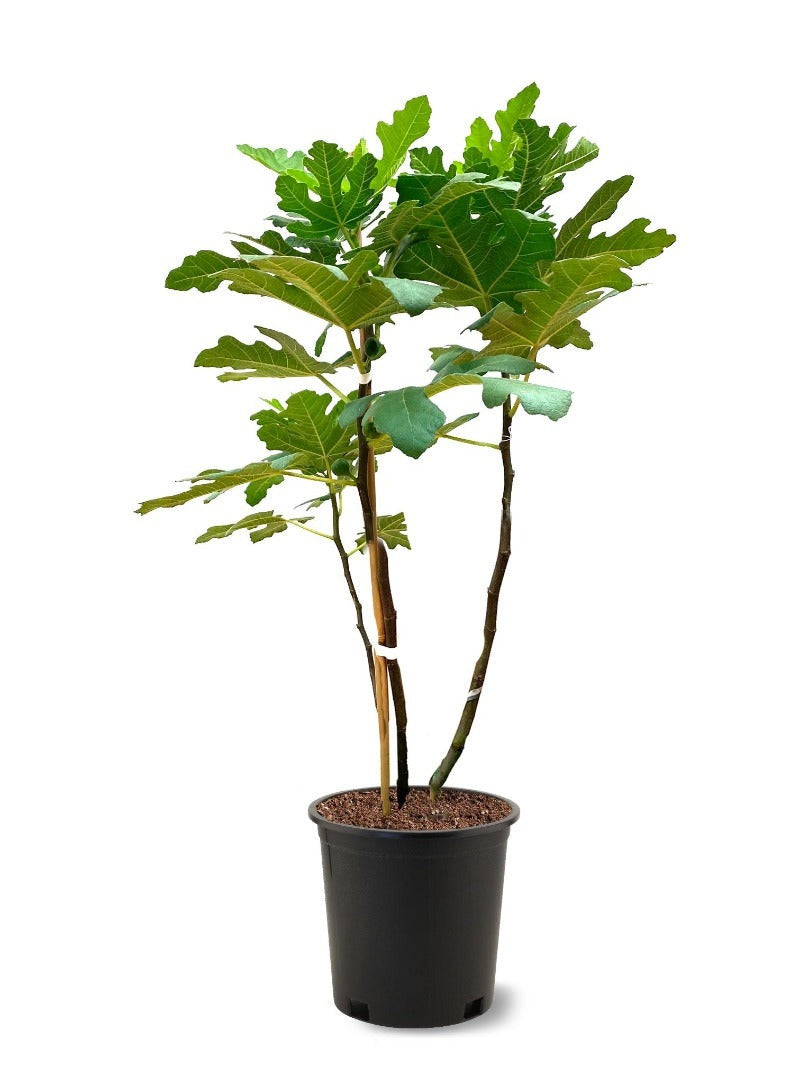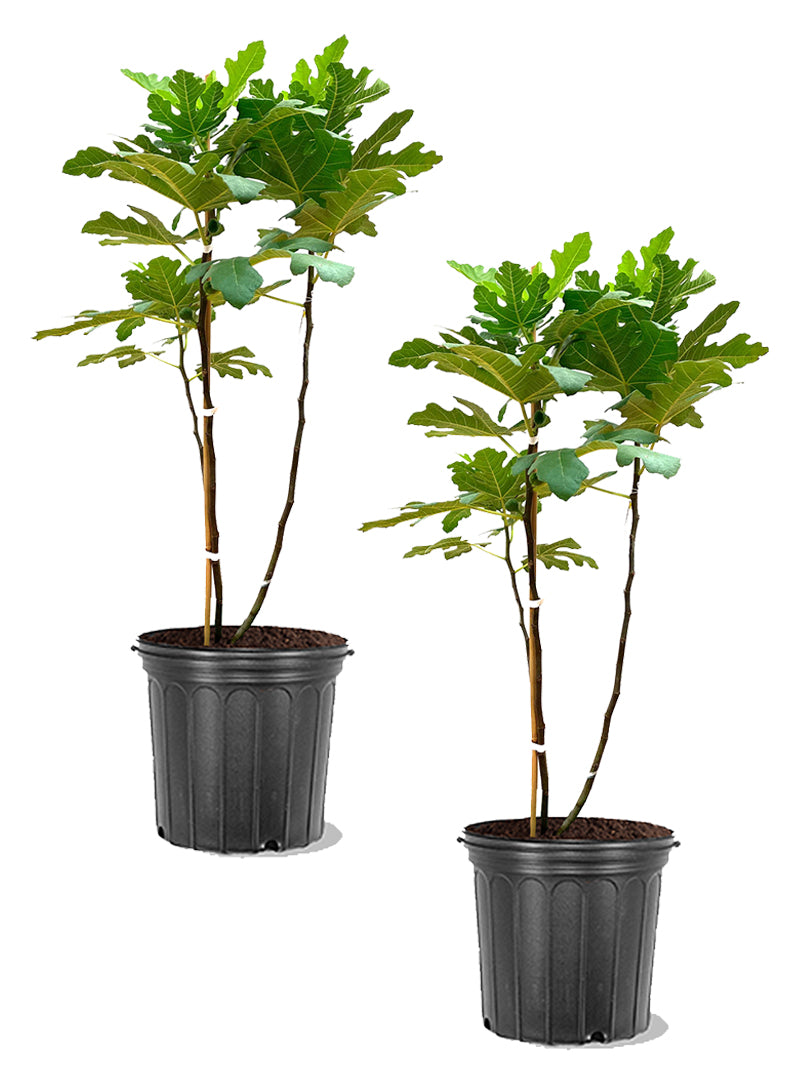Plant Quick Guide
Growing Zones:
Mature Height:
Mature Width:
Sunlight:
Spacing:
Chill Hours:
Growth Rate:
Harvest Time:
Years to Bear:
Pollinator:
Does Not Ship To:
Fig Trees - Brown Turkey
USDA Hardiness Zones: 7-10.
Description
The Brown Turkey Fig is a versatile, easy-to-grow fig variety known for its hardiness, abundant fruit production, and sweet, mild flavor. Ideal for beginner gardeners and seasoned growers alike, this tree offers reliable harvests of delicious figs, excellent for fresh eating, drying, and preserves. With its adaptability and low-maintenance care, the Brown Turkey Fig is a standout addition to any orchard or backyard garden.
Key Features
- Delicious Fruit: Produces medium to large figs with brownish-purple skin and amber-pink flesh. The flavor is sweet and mild, perfect for fresh consumption or culinary use.
- Extended Harvest: Typically provides two harvests per year – a smaller breba crop in late spring or early summer and a larger main crop in late summer to early fall.
- Cold-Hardy: More tolerant of colder temperatures than many other fig varieties, making it an excellent choice for gardeners in cooler climates.
- Self-Pollinating: Produces fruit without requiring a second tree, simplifying care and increasing yields.
- Attractive Tree: Features lush, lobed foliage that adds visual interest to your landscape.
Mature Size
- Height: 10–30 feet (can be pruned to a smaller size)
- Spread: 10–20 feet
USDA Hardiness Zones
- Zones 7–10 (with some success in Zone 6 when provided winter protection).
Care Instructions
- Soil Requirements: Thrives in well-drained, fertile soil with a slightly acidic to neutral pH (6.0–7.0).
- Sunlight: Requires full sun (6–8 hours daily) for optimal growth and fruit production.
- Watering: Water regularly, allowing the soil to dry slightly between waterings to avoid root rot.
- Fertilization: Apply a balanced fertilizer in spring and midsummer to promote healthy growth and fruiting.
- Pruning: Prune in late winter or early spring to shape the tree, remove dead wood, and encourage new growth.
- Winter Protection: In cooler zones, mulch around the base and wrap the tree with burlap or frost cloth to protect it from harsh winter temperatures.
- Pest & Disease Management: Monitor for common pests like fig beetles, aphids, or scale. Maintain proper watering and good air circulation to prevent fungal issues.
Why Choose Brown Turkey Fig?
The Brown Turkey Fig is a gardener’s favorite for its adaptability, resilience, and generous harvests. Whether you’re planting it in the ground or a container, this tree delivers beauty and bounty with minimal effort. Enjoy its sweet figs fresh from the tree, dried for a healthy snack, or as a flavorful ingredient in jams, desserts, and more. If you’re looking for a reliable, productive, and hardy fig tree, the Brown Turkey Fig is an excellent choice.
Shipping

At Plant Me Green we handle, package and ship the products you order with the utmost care. We ship your plants using FedEx Ground® the following business day after you have completed checkout.
We are now offering $15 flat rate shipping for all tree orders! Replacement tree shipping cost will be $15 per box. We still cannot ship to some states and US territories based off the Agricultural Laws that may be in place. Please see below for all exclusions.
If you have any questions concerning transit time for your order, please feel free to contact us at info@plantmegreen.com or toll free 855-817-5268.
Trees: Due to strict Agricultural Laws in place, we currently cannot ship to the following states: Alaska, Arizona, California, Hawaii. We cannot ship to Puerto Rico or international.
How to Plant

STEP 2) Once you've located the perfect spot, the hole you are digging must be at least double the width and as deep as the root system you are planting.
STEP 3) Remove the plant from the pot and place the root ball in the hole. The top of the root system should be level with the ground. Before placing the tree or shrub in the hole, use your hands to gently break up the root system.
STEP 4) Once the plant is in place, backfill the hole with native soil and any leftover potting material.
STEP 5) Pack down the soil to eliminate any air pockets.
STEP 6) When finished, water thoroughly.
Care Guide














